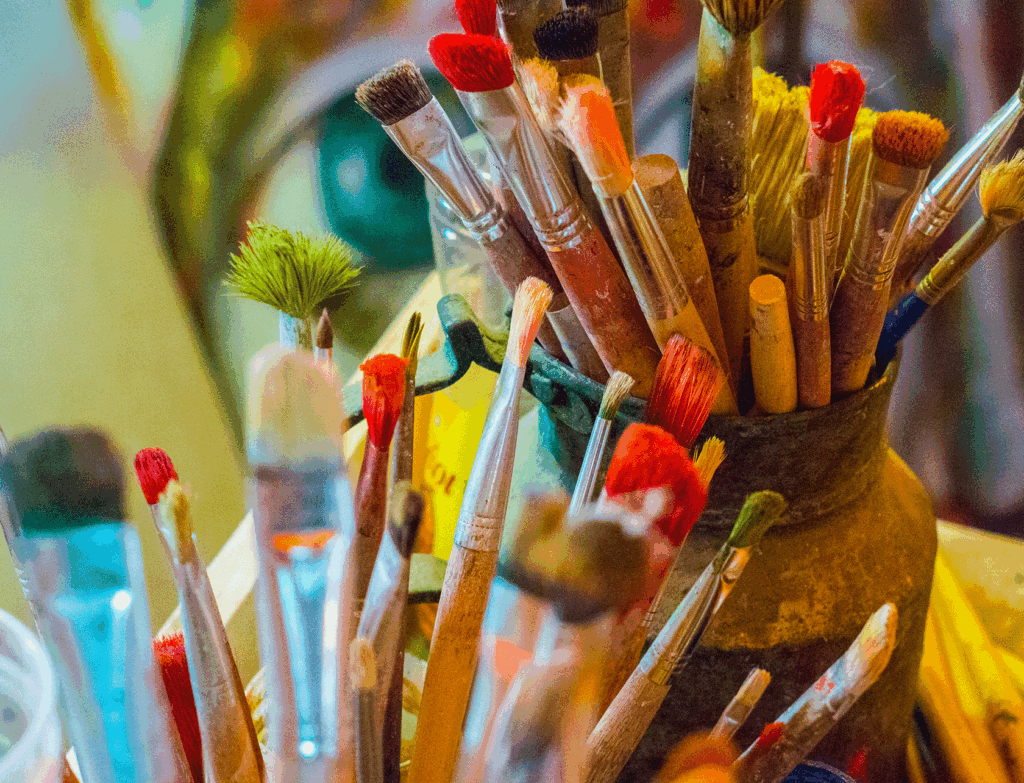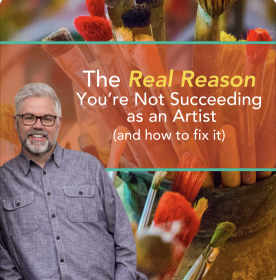Have you ever considered putting your artwork on apparel or merchandise in order to get your art out to the masses?
I’m going to talk about the ups and downs and the pros and cons of this idea here in this episode of 5 Minute Mentoring.
Take a few minutes to listen on your app of choice like ApplePodcasts, Stitcher, Spotify, GooglePlay or online at http://www.MattTommeyMentoring.com/podcast
Ok, enjoy the podcast
Matt
PS – Did you review the podcast yet? Screenshot the review, post the screenshot to your Instagram feed, and tag @thethrivingchristianartist. Do that, and I’ve got a surprise for you if you do…. #justsayin
Connect with Matt online at www.MattTommeyMentoring.com or on Instagram and Facebook @thethrivingchristianartist
Get encouraged and connect with other artists on the Thriving Christian Artist Facebook Page https://www.facebook.com/thethrivingchristianartist/
Fuel Your Creative Calling with Weekly Encouragement
Join thousands of Christian artists who are growing in faith, creativity, and purpose.
Subscribe to The Thriving Christian Artist Weekly and receive powerful, faith-filled content every week—designed to encourage your heart, spark your creativity, and equip you to walk boldly in your God-given calling as an artist.
? Click here. It’s free. It’s faith-filled. And it’s just for you.
Have you ever considered putting your artwork on apparel or merchandise in order to get it out to the masses? Well, one of my podcast listeners and Created to Thrive Artist Mentoring Program members, Jen, recently asked me about this idea of putting a great piece of artwork on a T-shirt. She wanted to know if this is a good idea or not, but more specifically, she wanted to know if this would cheapen her art.
I love tackling questions like this because it helps artists find focus and bring clarity of purpose to their creative pursuits. Over the years, I’ve found that there are really two ways to go about selling your art. Folks who have been in the biz for a while, usually end up in one of two camps: The Mass Merchandising Camp or the Fine Art Camp. It’s rare that artists have feet in both.
The Mass Merchandising Camp
In this camp, the whole idea is to sell as much art as possible by placing art on everything you can imagine while keeping the prices low enough to make it affordable to the masses. In this camp, your canvas might be cellphone covers, leggings, pants, shirts, t-shirts, hats, mugs, cups, stickers, towels, or calendars. You get the idea.
Now don’t get me wrong, this can be a great camp to be in artistically speaking. Artists in this camp are eventually drawn towards licensing their art. From art and art merchandise sold online and in big box stores, to mass reproduced series of prints for business and hotel chains, art licensing is a multi-billion dollar segment of the global art market each year.
To be clear, Mass Merchandising is an excellent camp to consider, but it does have one glaring downside. The more that you bring down the price of your artwork and increase its accessibility, the more you cheapen its value in the eyes of serious collectors, people I consider to be your best buyers.
What do I mean by that? True collectors, the folks who spend the most money on art, are usually looking for pieces that are original, exclusive and many times, offered at a higher price point. To them, buying art is not just about the art, but about the ambiance that goes around it, the prominence of the artist, the significance of the piece, and the perceived status that would come from owning it.
The Fine Art Camp
Now, for me, I chose to plant my feet in a different camp when it came to marketing my art. I learned a valuable lesson early on in the fine craft world. My friends who were potters tended to lean mostly towards functional pieces or towards non-functional work.
I began to notice that potters that focused primarily on functional pieces, mugs, bowls, plates, etc., were amazing artists that were stuck on a volume-producing treadmill. To make a living, these artists have to batch produce a larger volume of pieces to make ends meet. Again these are great artists creating beautiful pieces, but at the end of the day, a mug or a bowl meant for daily use isn’t going to fetch fine art prices.
Then there were the ceramicists that created ornate vessels and sculpture. Their focus was on unique one of a kind items meant to serve as the focal point of a room, a centerpiece on a table, or a high-end accent to an existing collection of fine art. Sure these artists never sold the volume of pieces that functional potters sold, but they did attract the kind of buyer that I was looking to attract in my art business.
Positioning Is Everything
Seeing those two schools of thought in action there inside the fine art camp made it easy for me to find my path when it came to creating and selling my art. While my career in basketry began in the “functional” school of thought, I knew I couldn’t stay there forever. Over the years, as my skill grew, I came to love making things that are exclusive, unique, and really special.
Consequently, I knew that if I wanted to follow my artistic passions, I had to move away from the “sure bet” functional baskets were for me and begin to position myself differently. My prices had to increase if my volume of sales were going to decrease, but more importantly I had to develop that “it” factor, that idea of exclusivity, that would attract the kind of buyer that could and would pay top dollar for my work.
As I did this, I learned a few things about the high-end art market. Buyers in this market are much more concerned about the connection of my values to theirs than they were with the concept of merely filling a blank space on their shelf. I learned that my ideal buyer was drawn in by the aesthetic of my work, the uniqueness of my pieces, and eventually by my reputation as an artist.
As I turned off the faucet in my art career on the lower-end stuff, I began to connect with clients that were passionate about my work. These folks never beat me up on price. In fact, price is often one of the last questions they ask when purchasing one of my woven sculptures.
The best part is that they started referring me to their friends which only served to strengthen my reputation and increase my value in the marketplace as an artist. I found that I love to do business with buyers like this, serious collectors who appreciate my artistic passions.
Trust is Key
Choosing your path as an artist is one of the most critical decisions you’ll make in your career as an artist. One of the things that helped me the most in my journey was to set aside some time to examine my heart.
I began to realize that when my focus was on “how can I make a buck,” or “how can I get you to buy my basket,” that I was living out of a place of fear and striving. Fear that I would be a starving artist that couldn’t provide for my family and striving to do everything in my power to provide for my own needs.
What I wasn’t doing was trusting the Lord, the One who had given me these talents and had called me to the marketplace to provide for me as His son. In my own epic saga of artistic (and spiritual) growth, I reached a point of surrender and trust.
I surrendered the idea that it was up to me and that I had to work, sweat, and strive and leaned fully into trust. I prayed something like, “You know what, Lord? I know that You love me. I know that You have called me an artist. I know that You want me to make things that I am passionate about. I know that as I am faithful to be the artist You called me to be, You are going to be faithful to bring the clients, the connections, and the provision.”
When I did that and disconnected from all that striving, that’s when things changed for me. It’s been the same for so many artists in my Mentoring Program. When they let go of striving to create and sell and leaned into trusting God and yielding to the direction of the Holy Spirit in every aspect of their art life, things began to change. Doors of opportunity, provision, and artistic fulfillment began to open wide for them as well.
I hope this has been a big encouragement to you. If this article has been a blessing to you, take a moment to share it with a friend.
Thanks for reading!



Leave a Reply